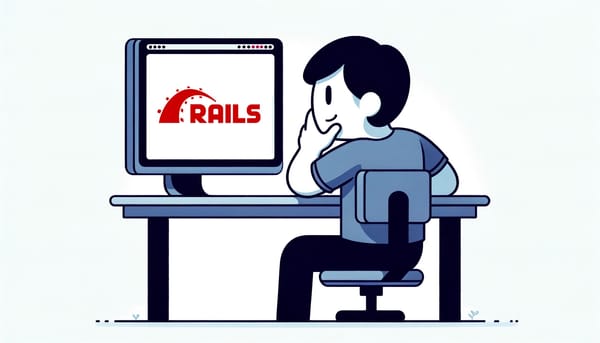Conducting 1-on-1 and Contributing to Members’ Growth

This post is also posted at the Mercari Engineering Blog as part of the Merpay Tech Openness Month 2022.
1-on-1 is a pattern to use in management to support team members in various ways. Whether for an IC or a manager, 1-on-1 can be helpful to build the team. Especially for the managers, 1-on-1 is one of the best and most effective approaches to communicating with their members. In the Payment Core team, we also use this strategy to achieve better team results.
Why 1-on-1?
1-on-1 is a small meeting of two where a manager meets a member, or members meet each other. It can cover various topics such as personal status updates, team updates, or issue discussions. It also creates a private and safe space for the team members to share and discuss topics.
Different from team meetings, 1-on-1 meetings focus on communication between two persons. It allows topics to go private. For example, members can talk about why a specific member is low in productivity. If we discuss it in a team meeting with five or more participants, it's not an easy topic. It would immediately sound like finger-pointing. Also, while discussing the reasons for being low in productivity, it can be personal. If a member’s low productivity is connected to his health condition, 1-on-1 would be a better communication place.
Another common issue in a team would that members don't tend to speak up during meetings. 1-on-1 would be an excellent workaround to address this issue. Stating ones' opinions in public can be intimidating, and some members would rather stay silent than speak up. While building a trusting and comfortable environment is a long-term solution, a short-term solution is to ask these members about their thoughts in a separate 1-on-1 meeting. It's surprising how many members would express more and dig deeper while being asked the same question again. This works very well for new members who have just joined the team. Many might not know, but 1-on-1 is a place to build trust and a sense of belonging to the team. Since there are so many private conversations, managers can leverage them and send a message to members that the team is here for them. For example, members might share their health conditions which might affect their work performance, but they are not ready to share with the team. Managers can find a way to adjust stakeholders' expectations but withhold this information from other members. If the issue is successfully resolved, members would have more trust in the managers, knowing that sharing secrets and reaching out for help is safe. It gives members a sense of security.
Last but not least, 1-on-1 is a place for supporting members' personal growth. Every member would need a plan to move forward. Without a personal goal, members can see where the team is moving toward but cannot see where they are moving toward. Whether a member is trying to keep sharpening the development skills or move to the management path, the manager should discuss and plan it with the member. The manager would know what resources are available in the team and how to incorporate the member's plan into the team's direction to create a win-win result.
What do we do during 1-on-1s?
During 1-on-1s, we usually start with casual chats and team updates. Apart from that, we try to maximize the effect of 1-on-1 by doing the following:
Setting personal goals
It can come in different forms, but one essential item we do is to set personal OKR for our review cycle. Every quarter, we talk to members and set up personal OKRs for that quarter. It could be team projects, specific improvements for a team, and other personal growth items. It’s not part of the evaluation but provides a clear path for members to move forward during a quarter.
Not all members would do this, but we encourage them to have a long-term plan for their careers. For example, what achievements is the member looking for in one or two years? It could be a specific grade to reach on the Engineering Ladder, learn one domain and rotate to a different team, or aim to become an Engineering Manager. A long-term plan provides a guideline for personal actions and helps members periodically analyze their direction and achievements.
Performing review cycle
In Merpay, we follow the review cycle for evaluations. 1-on-1 is between managers and members to set up goals and expectations. Generally, we're using the Engineering Ladder for all software engineers' evaluations. However, to better align the ladder description with the team's objective, managers need to set up expectations by connecting the ladder description with the team's direction. For example, for the definition of "Being able to create a project solution with little or no guidance", the manager might find a project that has an appropriate level of challenge for the members to design a solution. This would become an expectation of the members. Members can discuss, clarify, and think of their own goals.
After members have an agreement on the expectations, we would sync the results with members periodically. One pattern is to ask, "Is there any achievement since last time" in a 1-on-1 meeting. Members might often have a different understanding from managers, and we'll discuss and align the understandings during the sessions. For example, when a project is finished, the perceptions of the level of participation might be different. The manager might think that the member is only doing code review but not participating; however, the member might have participated in the entire development process. This inconsistency might result in disagreement or conflict during the evaluation period. A regular 1-on-1 meeting would allow us to sync the achievements and align the understandings.
Clarifying personal issues and finding solutions
For the team to work effectively, it would be better if team members are happy. Unfortunately, too many potential factors will lower members' productivity. For example, having too much tech debt, something working unexpectedly in the current workflow, members not getting along, or personal reasons. During every 1-on-1, managers (at least for me) would ask members: "Is there any concern about the team or issue?" Usually, every member would raise one or two issues occasionally. It's important to listen, clarify, and discuss possible solutions with the members. Managers might choose to give direct suggestions or use the coaching questions to find a solution with the members.
Improving problem-solving skills with mentoring and coaching As above, we have different approaches to address when running into issues. One great method is mentoring and coaching to improve the members' long-term problem-solving skills.
The difference between mentoring and coaching is a big topic, but in short, they are two different approaches to resolving an issue. In short, mentoring is providing direct suggestions for an ongoing problem. This is a prevalent reaction when hearing an issue. On the contrary, coaching allows members to find answers by themselves by asking a series of questions.
For example, suppose members raise an issue that no one is taking responsibility for a specific project. In that case, in the mentoring mode, the manager might give direct suggestions such as asking individual members, reducing the project's workload, or splitting the project into two smaller projects. On the other hand, in the coaching mode, the manager would ask questions such as: "why do you think that would happen", and "is there any solution you can think of so far". The point of these questions is to help members ponder the situation, assess solutions, and find the best solution by themselves.
Using an appropriate amount of coaching mode can contribute to the members' problem-solving skills. Members are in a state where they would revisit the issue. With more details recalled and revealed, it might form a solution during this process. However, there might be times when members are not able to proceed. In this situation, temporarily switching back to the mentoring mode might help. For example, if members cannot figure out why a project is canceled and start to give random reasons, managers can provide more context of a project to assist.
Tips & Tricks for Effective 1-on-1s
There are already many articles talking about the tips and tricks for managers to run 1-on-1 effectively, but the following are what we do to improve the effectiveness of 1-on-1s:
- Consistency and regularity: A regular 1-on-1 will establish a good communication habit for both members and managers.
- repare topics: A 1-on-1 without any topic is a casual chat. Make sure both managers and members prepare to cover all necessary topics.
- Avoid overlapping contents with other team meetings: Contents like project syncs should be part of project meetings or daily standups. Sometimes it's necessary, but I would avoid talking about these topics in 1-on-1s.
- Take notes: Make sure topics and dates are categorized and highlight essential discussions. Organizing notes well would help us review and search for specific discussions six months later.
- Do action items: Any action item coming from 1-on-1s should be taken care of by either the member or the manager. Remember to follow up!
- The meeting basics: This looks trivial, but this will contribute significantly to the effectiveness of the 1-on-1 meetings. The basics include: showing faces (if doing remotely), being on time, staying focused, taking notes, etc.
- Find the right style: Different members have different communication habits. Test with different patterns and find the best one to maximize the effectiveness.
Conclusion
There are many ways to perform effective 1-on-1s. With new members joining, new organizational strategies being implemented, and new issues occurring, it's very challenging for managers to keep track of every detail going on in the team only during team meetings. 1-on-1 meetings offer great opportunities for managers to sync the status with the team and with each individual team member. With a proper strategy, 1-on-1 meetings can help ease managers' burden in team management and people management.





